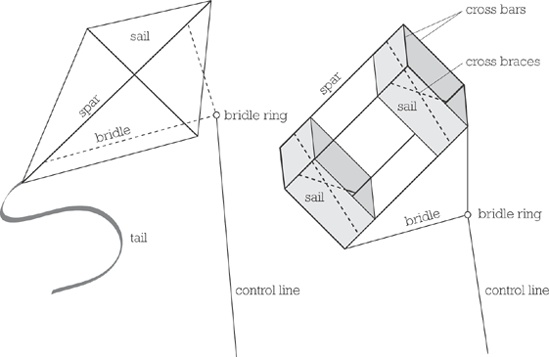Cultures around the world have enjoyed kites as toys and curiosities for almost 3,000 years, but it was the Victorians who sought to exploit their full potential (and are responsible for the two styles of kite we’ll be building; Figure 23-1). Eager men in bowler hats and sleeve garters hoped to harness the power of kites to pull sleighs, channel electricity, mount telegraph lines and wireless aerials, and haul scientific equipment, wary assistants, and low-ranking military scouts skyward. It was an age of wonders—and spectacular failures.
The key to kite design is finding materials that are light enough to support a manageable-sized kite but sturdy enough to weather the occasional hard landings and less-than-ideal conditions: Heavy winds, damp grass, and blown sea mist can quickly spoil paper kite sails. The two kites in this project (Figure 23-2) combine traditional, rugged bamboo frames (used in China for millennia) with cheap, nearly indestructible Tyvek sails (which are impervious to water and resist running rips).


